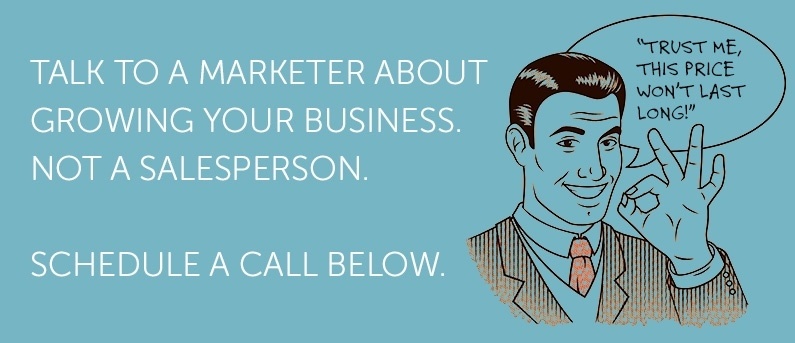 You can do all the advertising on billboards, in trade magazines, and the side of your truck you want; if you don’t have an optimized website you are missing out on a significant percentage of traffic. And while you probably have your site URL on your advertising, most people don’t start with that when they run into a manufacturing problem they need to solve.
You can do all the advertising on billboards, in trade magazines, and the side of your truck you want; if you don’t have an optimized website you are missing out on a significant percentage of traffic. And while you probably have your site URL on your advertising, most people don’t start with that when they run into a manufacturing problem they need to solve.
Most people head right to a search engine to start looking for a solution. You need to invest in search engine optimization, fondly known as SEO, so your website will be the first one on the results page. Following are 10 ideas to get your manufacturing company site moving to the top of the search engine results page.
1) Define SEO Goals
Before you start making changes to your site you need to know where you want this to go. Do you want to build links, generate traffic, or attract highly qualified leads? Will you use both on-page and off-page SEO? Do you intend to use a mix of organic and paid search?
A goal provides a target to aim for. You can more easily determine the right tactics if you know where you need to go. And think about your entire marketing funnel not just about filling the top.
2) Research Keywords
Find out how your potential leads look for a manufacturing company. What words do they plug into Google to run a search? If you already have Google AdWords you have access to a nifty keyword research tool to let you see how competitive each keyword is, how many searches are done on it over a period of time, and how much that keyword is worth in PPC.
If you don’t have an AdWords account there are other free keyword tools such as the one from Wordstream.
3) Optimize Domain Name
Now that you know the best keywords to use put them where they will do the most good. One of those places is in your domain name. Another is your URL. The domain name and site URL both carry a lot of weight with the search engines because if the keyword is here then there is a high probability that's what the site is about. A keyword in a domain name and/or a URL denotes a high degree of relevance.
4) Develop Good Links
Well, you wouldn’t intentionally develop bad links but you do need to put in a real effort to attract links relevant to your industry and company. Don’t even think about paying for links from a link farm. The search engines know about those. If you site is full of links that have nothing to do with your business or you are linking out to irrelevant sites just for the backlink, Google, Bing, and the rest will put your website in a time-out until you can improve your link profile.
Link building is best done slowly and with care. And as you publish relevant content, those good links will find you.
5) Include a Site Map
The best way to make sure all your website’s pages are indexed is to create a site map with links to all the pages. Search engines can easily find all the pages this way. It doesn’t have to be visible to human visitors but it would be nice to have.
Make sure it is maintained whenever a page URL is updated or new pages added to keep it accurate.
6) Use Robots.txt
The phrase robots.txt tells search engines whether you want a particular page crawled or indexed. More formally it is called the Robots Exclusion Protocol. If a page has this phrase on it most search engines won’t crawl it or index it, making it impossible for people to find. Use it judiciously.
And remember it is a public file so even if the page isn’t indexed anybody can go into your code and see what pages are being excluded. Also malware bots tend to just ignore them. So the pages aren’t really invisible.
7) Create Relevant Content
Those keywords you researched need to appear in your content. It isn’t just a question of a search engine finding the page. If the keyword is in the URL but the searcher doesn’t see it in the page content he is going to bounce right back to the SERP.
Relevant content contains keywords and information that further defines what your page is about and shows that it does indeed match up with what the searcher is looking for. It also tells other websites that your content may be relevant to them as well and they will want to link to you thereby improving your link profile.
8) Fill in Metadata
It is true that the keyword tag is worthless. The search engines have been ignoring it for years due to the outright abuse it experienced. But there are still important meta-tags that advance your ranking.
- Alt Tag – Every image should have an alt tag to identify it to the search engines. It’s a great place for a keyword phrase.
- Page Title Tags – This is critical. This information not only shows up on the title at the very top of the browser, it is an indication of the overall relevancy of the page.
- Meta Descriptions – While not really a place for keywords anymore, some of the latest search engine algorithms use the meta-description as part of the blurb searchers see on the results page. Make it catchy like a headline. These descriptions are also often used by social media as well.
- Rel=Author – Also known as authorship, this is specific to Google and provides a rich snippet of information about your page.
This is the low hanging fruit of metadata. There are more sophisticated protocols available to juice up how your site appears on a results page and how the search engine crawls and treats your site.
9) Update the Site
Don’t let your site stagnate. If you don’t keep supplying fresh information about your manufacturing company the search engines will stop crawling your site. If you frequently have new content the search engines will crawl more regularly.
A regular blog is an excellent way to add new content on a weekly basis.
10) Hire Help
Like content creation, SEO can seem a bit overwhelming. And it isn’t a one-and-done activity; SEO requires monitoring and updating. The search engines change algorithms frequently throughout the year and what worked yesterday may not work today.
Either appoint an internal marketer or hire an agency to help out if you feel like you are falling behind. Just be sure your SEO point person stays on top of SEO changes and doesn’t indulge in black hat tactics that can get your site blacklisted.
Go through each of these ideas and put them into practice one at a time. You don’t have to do these all at once. Some work together and you’ll find yourself taking care of more than one of these tips at a time but eventually you will have optimized your entire site and are happily backing in the glow of the top position on a search engine results page.


